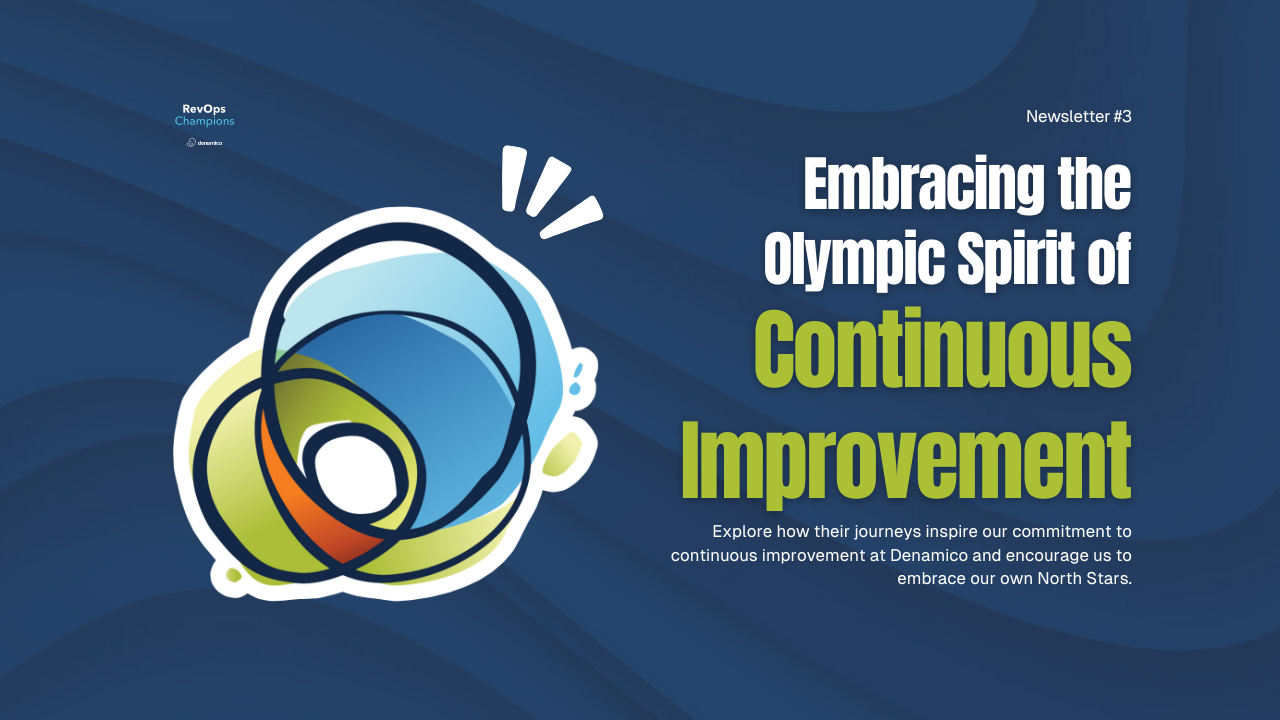RevOps Champions Newsletter #3
Tomorrow is July 26th, 2024. You know what that means…?
The summer Olympics begin!
I love watching the classics like track & field, swimming, diving, and gymnastics, but am equally looking forward to the newer sports such as surfing, skateboarding, and brand-new-to the-Olympics, breakdancing.
For me, the Olympics are the pinnacle of human inspiration…
Imagine training for something over the course of 5, 10, 15, or 20 years for this one moment.
The athletes have dedicated much of their lives to reaching an elite level of their sport 🏊🏽♀️🏑🤸🏻♂️. They’ve made sacrifices, mastered self-discipline, and worked hard to be able to pay💰for their training, travel, competitions, and equipment.
They’ve also worked on their minds🧘🏻 to be psychologically strong in the most intense and high-pressure situations. They’ve had many wins, and suffered many losses, along the way. They’ve continuously improved themselves in all aspects to become the best of the best in their sport.
Learning about these athletes and seeing them compete in the Olympics always makes me think about the level of COMMITMENT they’ve made to themselves, their team, and their supporters, to arrive at that moment.
One of our recent podcast guests, Greg Brown, would probably describe an athlete’s goal to become an Olympian as their ‘North Star.’ It’s a clear goal that keeps them focused and motivated. Even when things aren’t going their way. Their North Star is also the mission that helps align everyone around them, such as their coaches, families, friends, and employers, so that they also willingly commit to supporting the athlete.
I’ve never done anything athletically myself that required such a massive commitment. Actually🤔, I don’t think I’ve ever done anything period that required commitment like that!
Imagine training for something that takes as many years as becoming an Olympic athlete. How much changes over that time period. Your height. Your weight. The structure of your body. The gear and equipment. The outfit styles! Your coaches. Your teammates. Your competitors. Training practices.
But to become high performers, Olympic athletes know they must undergo all of these changes because it’s the only way they can continuously improve to maybe arrive, at the top of their game.
It reminds me of something Greg shared during his podcast interview. Everything and everyone, including companies, change and evolve. So having a mindset of continuous improvement only makes sense since we don’t live or operate in a static world.
But so often, we complete a project and don’t think to continue to monitor it after completion to make sure it continues to achieve, and improve upon, the results we expected.
At Denamico, we help our clients optimize their processes, data, and technology for their sales, marketing, and customer service teams. And it’s interesting to see how much better our clients who are constantly setting new standards and goals perform, in comparison to other companies who don’t have a mindset of continuous improvement.
It’s like the James Clear quote "Improving by 1% isn't particularly notable, sometimes it isn't even noticeable..."
But, "If you can get 1% better each day for one year, you'll end up 37 times better by the time you're done."
What is your personal or professional North Star 🌟 ? Imagine where you could be in July 2025 by putting in your 1% every day. I’m ready to get started!
Allez allez USA! 🏅🇺🇸
 |
Kristin Dennewill
|
Therese's Takeaways
Last weekend, I found myself assembling a new gliding patio chair––a classic summer pastime.
There I was, surrounded by a sea of parts and clutching instructions that seemed longer than a novel and more confusing than advanced calculus.
As I sat on my patio floor, surrounded by pieces and feeling slightly overwhelmed, it hit me – this is how many of us feel when facing change in our professional lives.
Whether it's implementing a new software system or restructuring a department, change can often feel like that intimidating box of chair parts with a booklet of vague instructions. It's all there, but putting it together? That's where the challenge lies.
Successfully assembling that chair – and navigating change in our organizations – boils down to one crucial element: simplicity. However, achieving simplicity is often harder than it looks.
This reminded me of Greg Brown's recent insights on the RevOps Champions podcast. He emphasized that while it is easy to add complexity, that is typically not the right thing to do for your business.
The hardest thing to do is to take the complex and simplify it. Greg's point resonated with me as I deciphered the patio chair instructions. My experience could have been simpler, had they just focused on the essential steps and a singular image of how the assembled chair should look.
In the same way, when we're implementing change in our organizations, it's crucial to distill complex processes down to their most simplified essence. First, we need to break it down into clear, manageable steps. But more importantly, we need to communicate the 'why' behind each step. Why are we putting this leg here? Oh, so the chair doesn't topple over when we sit in it. In the professional world, this translates to explaining why we're making changes and what's in it for each team member. It's not just about assembling a new process; it's about creating a more comfortable, efficient 'seat' for everyone.
When we simplify the complex and clearly communicate the benefits, we turn resistance into enthusiasm. It's the difference between a frustrating afternoon of failed attempts and the satisfaction of lounging in a perfectly assembled chair by sunset.
Next time you're leading a change, remember my patio chair saga. Strive for simplicity. Break it down, make it clear, and tell everyone why it matters and how it'll improve their 'view'.

|
Therese Brinkman
|

